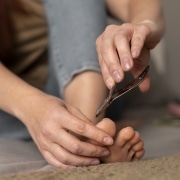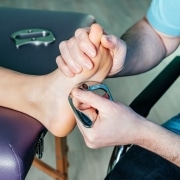What Causes Ingrown Toenails?
Ingrown toenails occur when a sharp corner of your nail rubs against the sensitive flesh of your toe, Because toenails are naturally rigid, that sharp edge of the nail against soft tissue causes discomfort and pain. When you need help with an ingrown toenail in Austin, contact the office of Dr. Jeffrey Lamour.
An ingrown nail can happen to anyone. The following are some of the most common causes:
Improper Toenail Trimming
People often cut fingernails in a way that mimics the curvature of their fingers. But doing this with toenails might lead to ingrown nails. The corners of your toenails could grow into your skin if you cut them too short or in a curved shape.
Trim toenails in a straight line instead, and avoid the urge to trim toenails too short. If toenail trimming becomes problematic for you, your Austin podiatrist can take care of it for you.
Ill-Fitting Shoes
Shoes with narrow toe boxes and shoes that are too small for your feet can cause the toes to squeeze together in an unnatural fashion. When this happens, the toenails can be forced into the delicate skin around them, making it more likely that you will develop an ingrown toenail.
Instead, opt for comfortable, high-quality shoes that fit well. Choose leather shoes when possible, as leather stretches and conforms to the shape of the feet better than man-made materials.
Naturally Bent Toenail
Sometimes individuals are born with one or more naturally bent toenails. In a case like this, you can expect to have a higher risk of developing ingrown toenails over the course of a lifetime.
If this is the case, it’s even more important to follow the advice mentioned above. In addition, regular visits to Dr. Jeffrey Lamour’s podiatrist office are crucial to help prevent potential issues with ingrown toenails before they worsen.
If you do develop an ingrown toenail, contact us today to book an appointment as soon as possible. Ingrown toenails are highly treatable, but left untreated they can develop into a serious infection.








